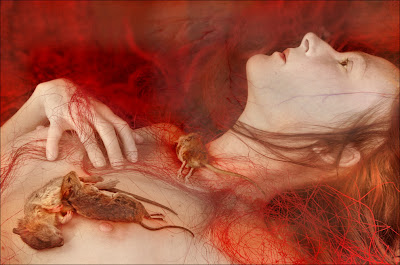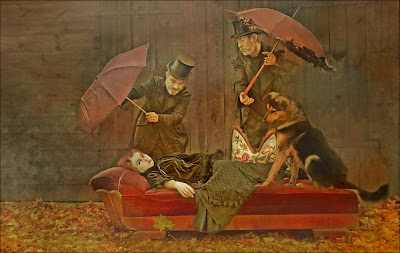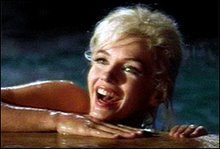
Anke Merzbach




Nothing but a Generalized Insanity Blog™ and repository of random finds AKA Brain Dumps™. This is a CaseyPedia Approved corner of the CaseySphere and the Official Source of 6 Degrees of Casey Serin™. We are Project SCOBY Doo™ and we are purveyors of fine thongs, butt plugs, fishnets, Nietzsche, Fruit Loops™ and duck dongs for the likes of Nicole Richie and Paris Hilton among other well-established celubutards! A Shining example of how NOT to blog. I Am Aware of All Internet Traditions™
 Egil Paulsen's Unveiled via Changethethought
Egil Paulsen's Unveiled via Changethethought Edvard Munch's Madonna
Edvard Munch's Madonna via Inject and Infect
via Inject and Infect  Repletion by Yuta Onoda
Repletion by Yuta Onoda

 Cliff House, San Francisco – September 7th 1907
Cliff House, San Francisco – September 7th 1907

 The Cliff House and Sutro Baths survived the 1906 earthquake with little damage but burned to the ground on the evening of September 7, 1907. Rebuilding of the restaurant was completed within two years and, with additions and modern restorations, is the one seen today.
The Cliff House and Sutro Baths survived the 1906 earthquake with little damage but burned to the ground on the evening of September 7, 1907. Rebuilding of the restaurant was completed within two years and, with additions and modern restorations, is the one seen today.





 ~*The Cotton Candy Castle*~
~*The Cotton Candy Castle*~ Censored by `darkgoth
Censored by `darkgoth random
random Tied Up!
Tied Up! Katherine Heigl by Michael Thompson
Katherine Heigl by Michael Thompson  Shan: Geisha II by ~NuDigi
Shan: Geisha II by ~NuDigi

 Wassily Kandinsky, Franz Marc, August Macke, Alexej von Jawlensky, Marianne von Werefkin, Gabriele Münter, Lyonel Feininger, Albert Bloch and others founded the group in response to the rejection of Kandinsky's painting Last Judgement from an exhibition. Der Blaue Reiter lacked a central artistic manifesto, but was centred around Kandinsky and Marc. Paul Klee was also involved.
Wassily Kandinsky, Franz Marc, August Macke, Alexej von Jawlensky, Marianne von Werefkin, Gabriele Münter, Lyonel Feininger, Albert Bloch and others founded the group in response to the rejection of Kandinsky's painting Last Judgement from an exhibition. Der Blaue Reiter lacked a central artistic manifesto, but was centred around Kandinsky and Marc. Paul Klee was also involved. Blaue Reiter, 1903
Blaue Reiter, 1903




 Moonriver Geisha by ~jellofishy
Moonriver Geisha by ~jellofishy Drowning Geisha by ~classically-fragile
Drowning Geisha by ~classically-fragile I liked the photo, but I also think there's a close connection between epilepsy and migraines - or at least the sort I get - so I found the article interesting and this quote rather funny:
I liked the photo, but I also think there's a close connection between epilepsy and migraines - or at least the sort I get - so I found the article interesting and this quote rather funny:



 Because I had strong interest in sex from the school child age, I sneaked in to the ladies' room. I knew I had been disliked by the girls in the class, and also it became impossible to take out a large amount of toy (minicar and eraser) put in the anus and I was taken to the hospital by my parents. When I wanted to experience the orgasm with the anus and the anus was groped while sitting straight, I slept as I was, and the nerve of the foot started being cut, and I was carried by the ambulance. Because I was putting inconvenience on the parents each time, I think that I was making them anxious.
Because I had strong interest in sex from the school child age, I sneaked in to the ladies' room. I knew I had been disliked by the girls in the class, and also it became impossible to take out a large amount of toy (minicar and eraser) put in the anus and I was taken to the hospital by my parents. When I wanted to experience the orgasm with the anus and the anus was groped while sitting straight, I slept as I was, and the nerve of the foot started being cut, and I was carried by the ambulance. Because I was putting inconvenience on the parents each time, I think that I was making them anxious.

 Nuclear Tentacles is featuring Fishnet Friday with a Horse!
Nuclear Tentacles is featuring Fishnet Friday with a Horse!
 Max Diner
Max Diner





| ## |
| US CO2 . . (cubic feet) |


